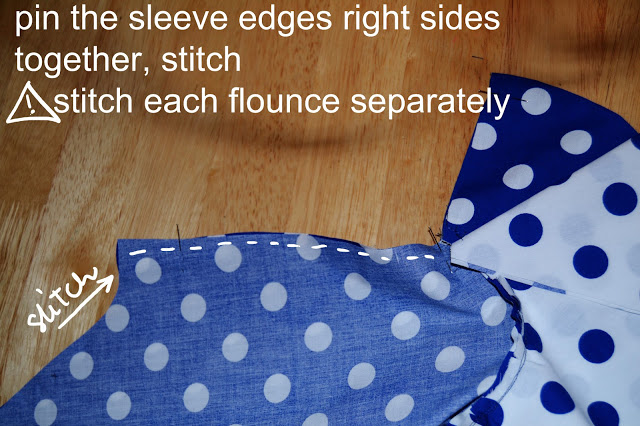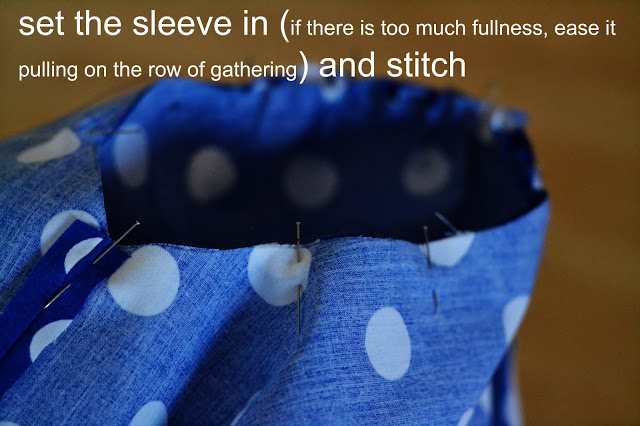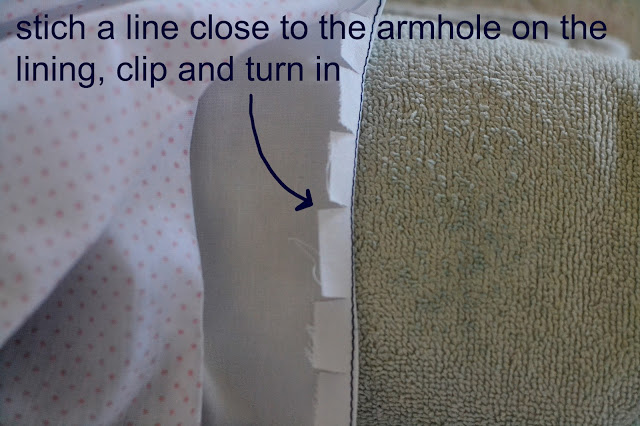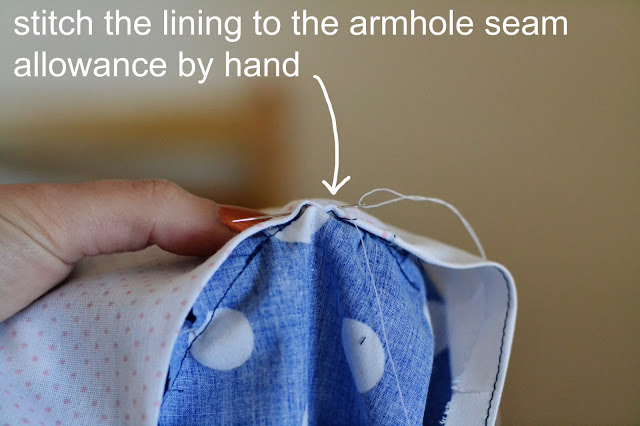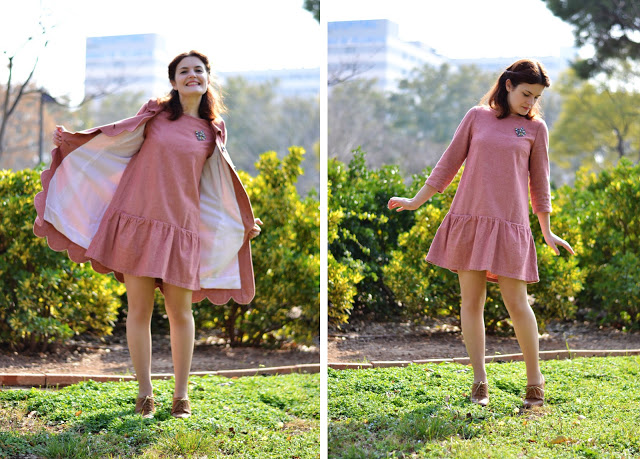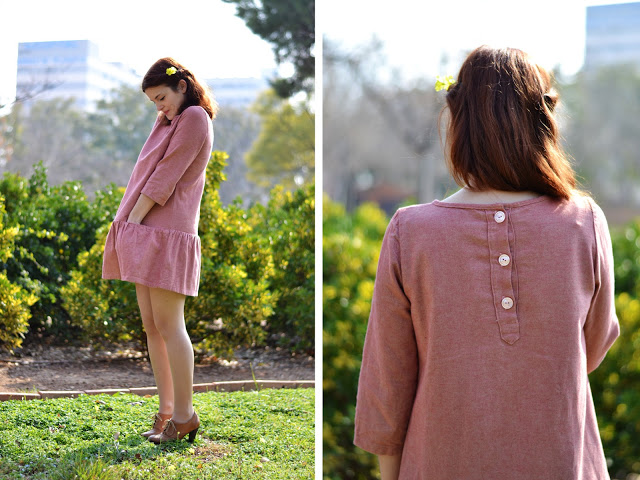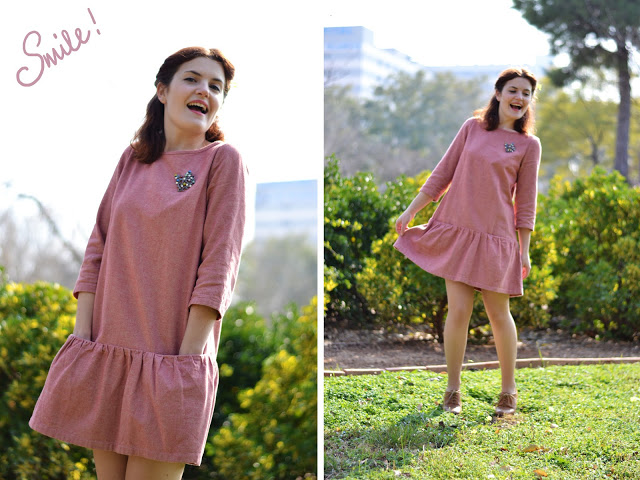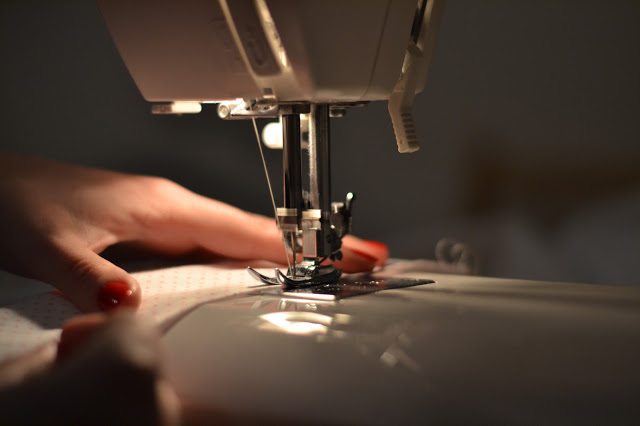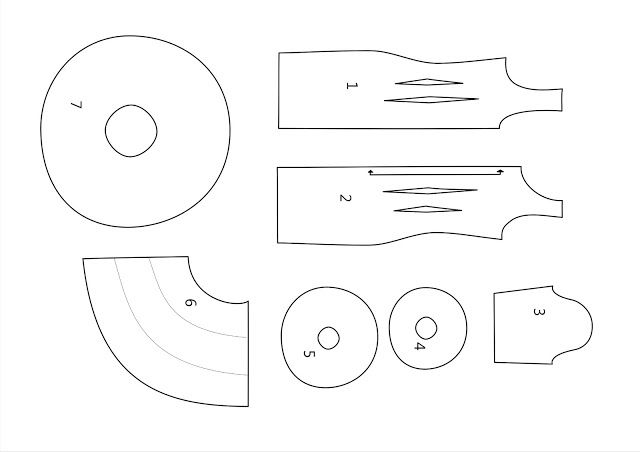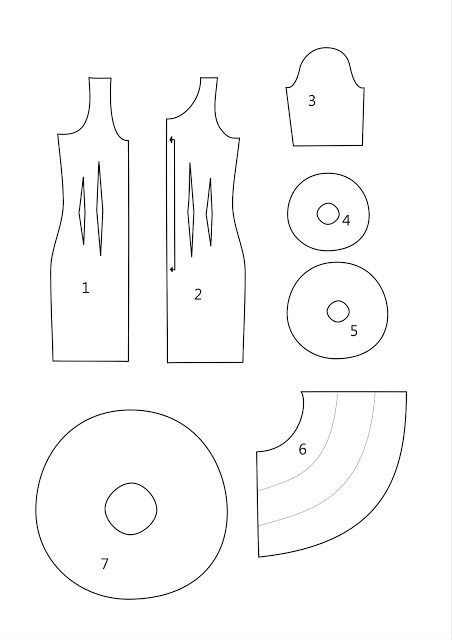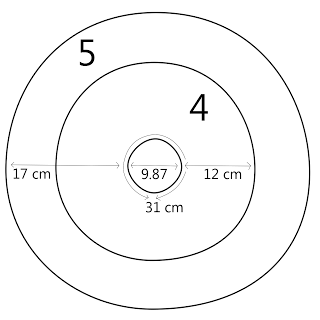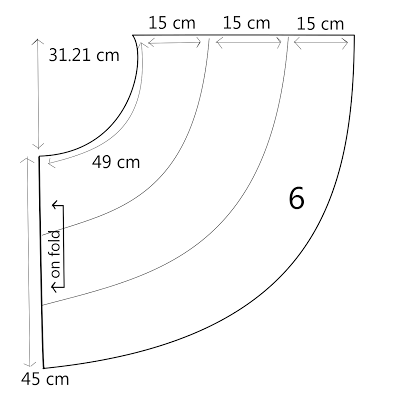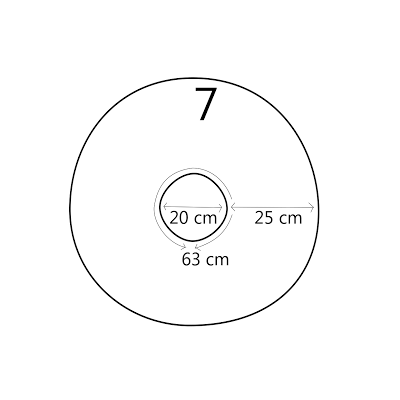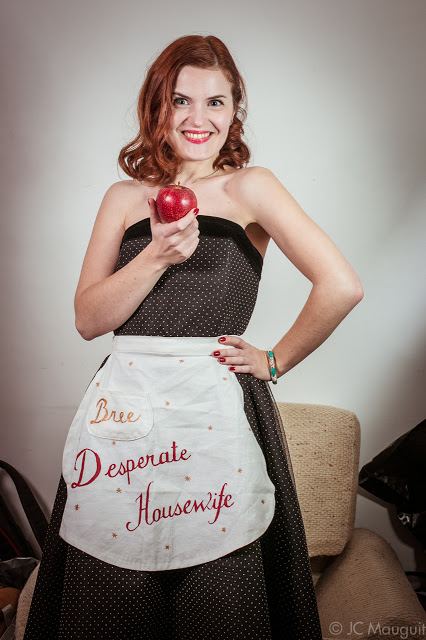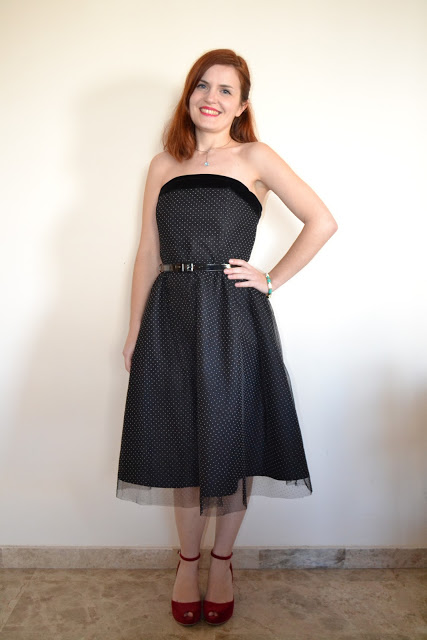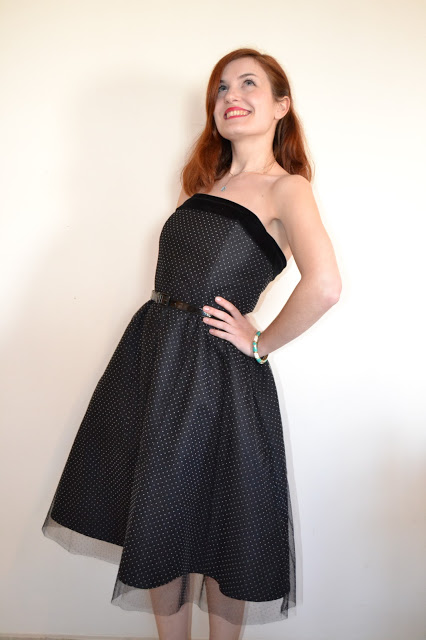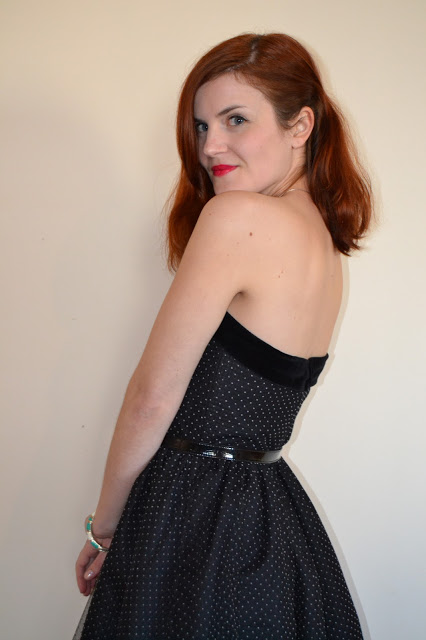Here is my new favourite sweater: Il Grande Favorito! It’s my first sweater but already my favourite!
After learning a little bit about knitting this winter with a loose cardigan, I wanted to make this sweater as a lot of people recommended it for its simplicity and yet nice details (the low back, raglan sleeves and seamless shaped (worked from the top down with circular needles).
I thought it would be too difficult but no, it was just the perfect project for me: easy enough to make it without loosing hair over it and challenging enough so I can learn something new.I wore it all this week end and I love the comfy and oversized look, as well as the nice neutral colour I picked.
The details: wool by Lanas Stop extra merinos, bought in a small shop, and Il Grande Favorito pattern by Isabell Kramer, bought on Ravelry (available in French and German as well, I bought it in French and the translation is great!).

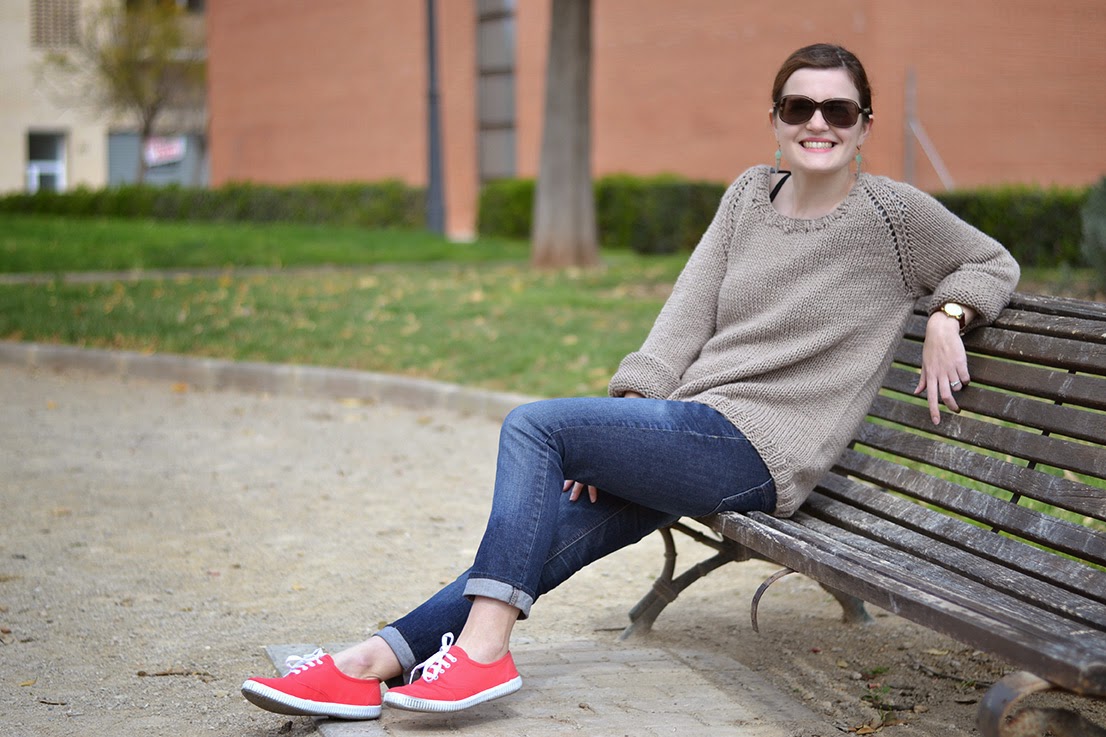
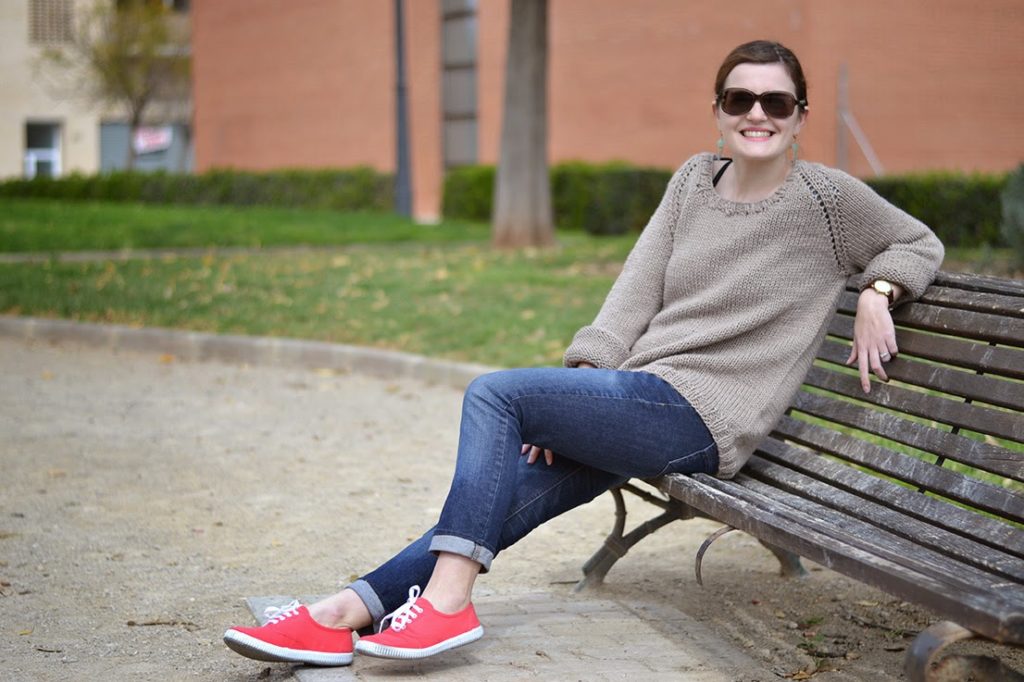
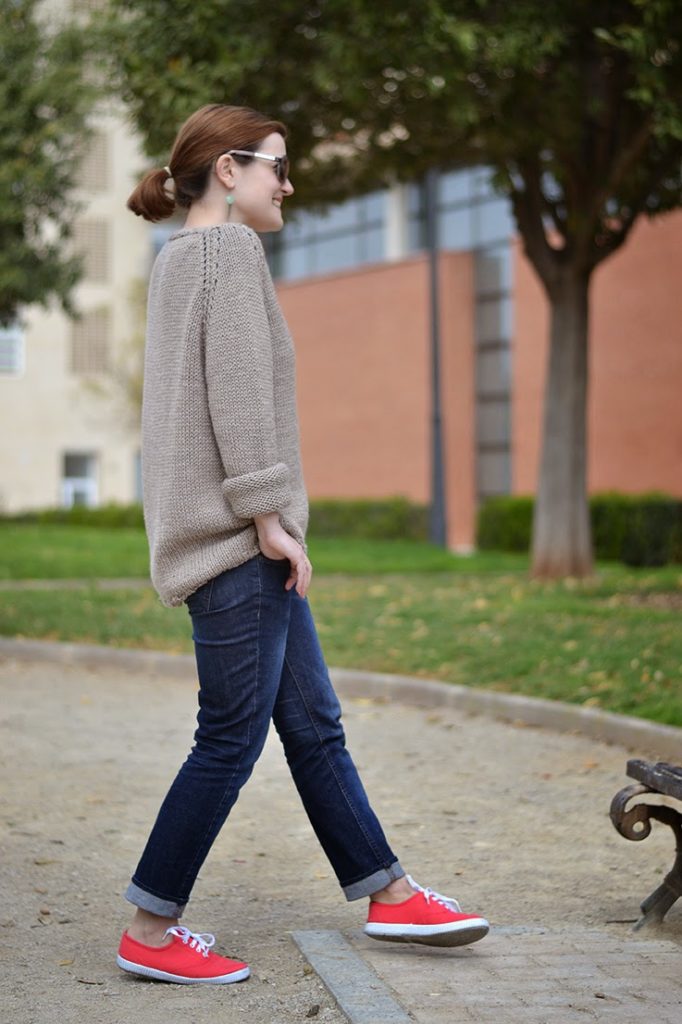
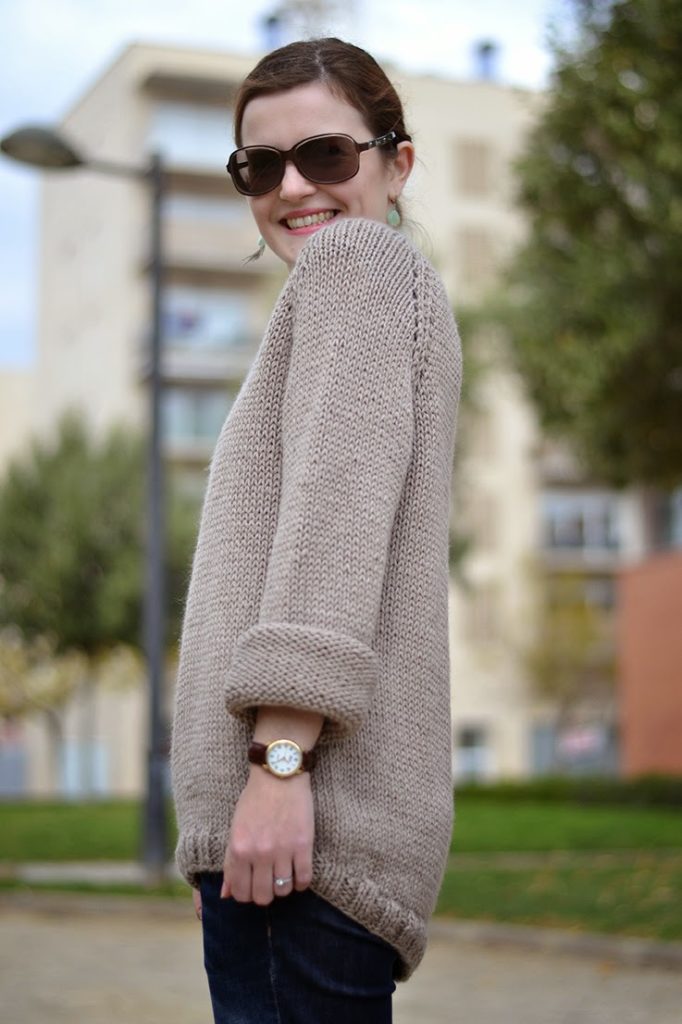
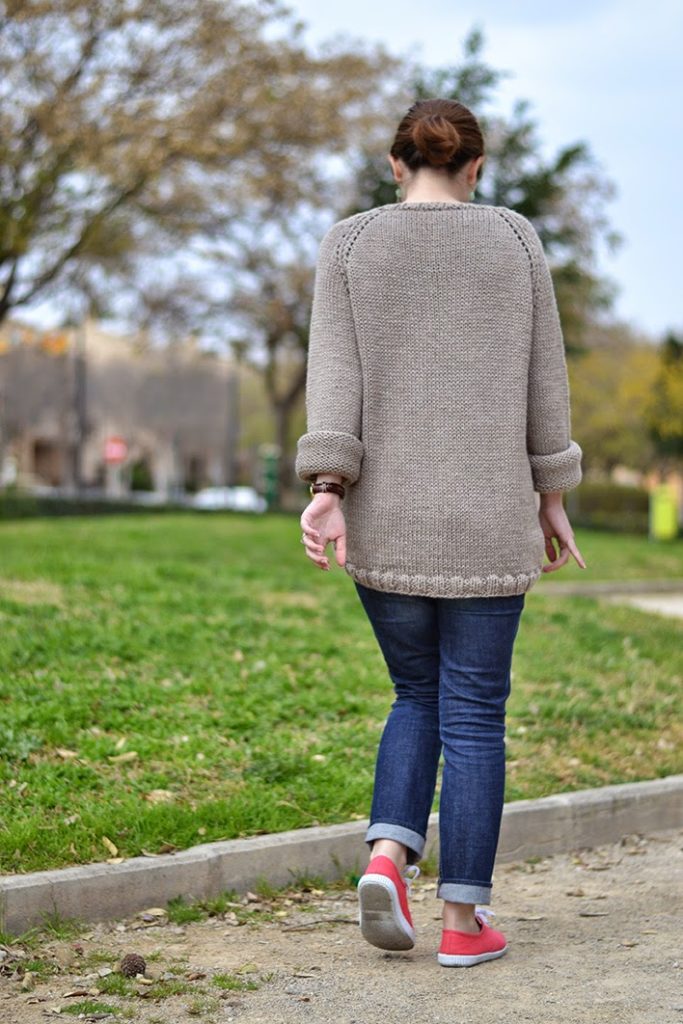
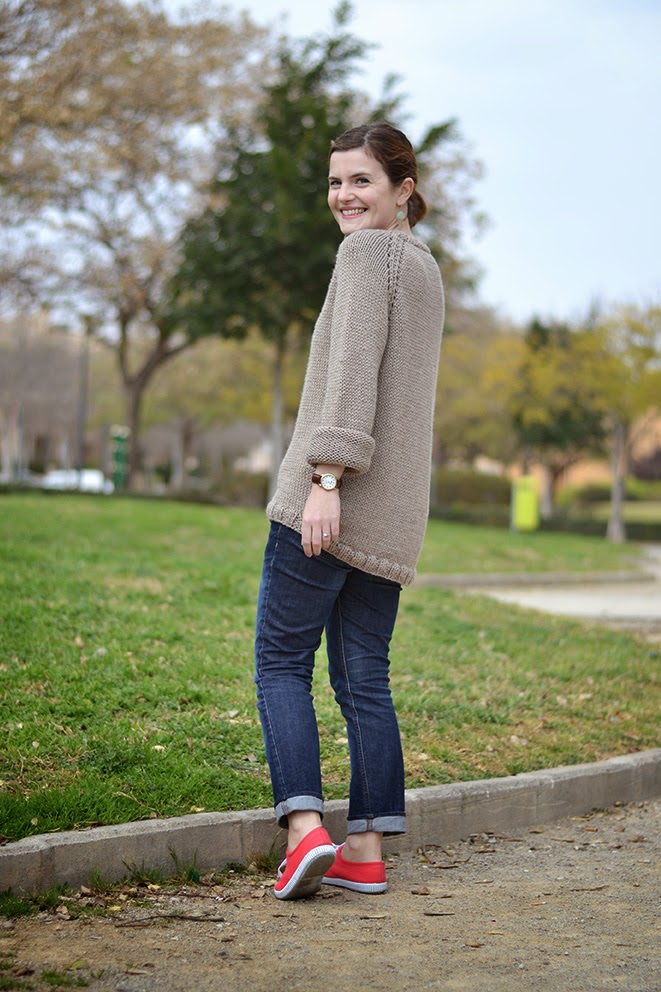

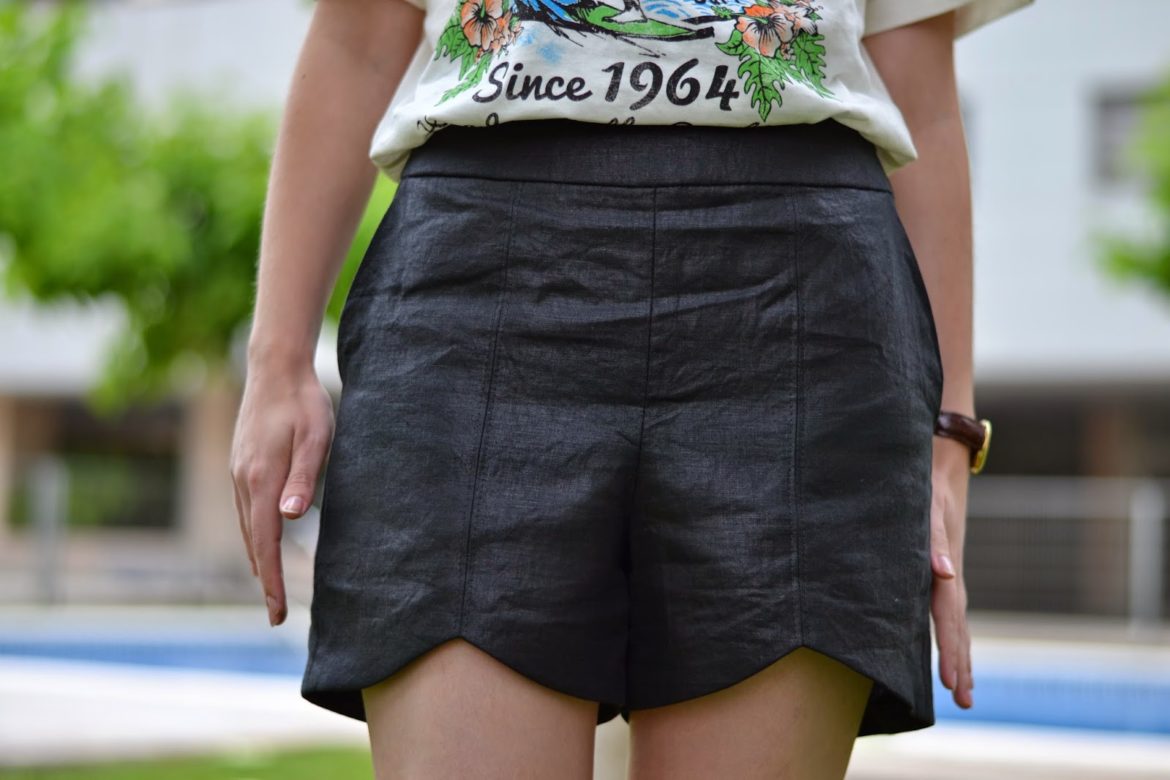
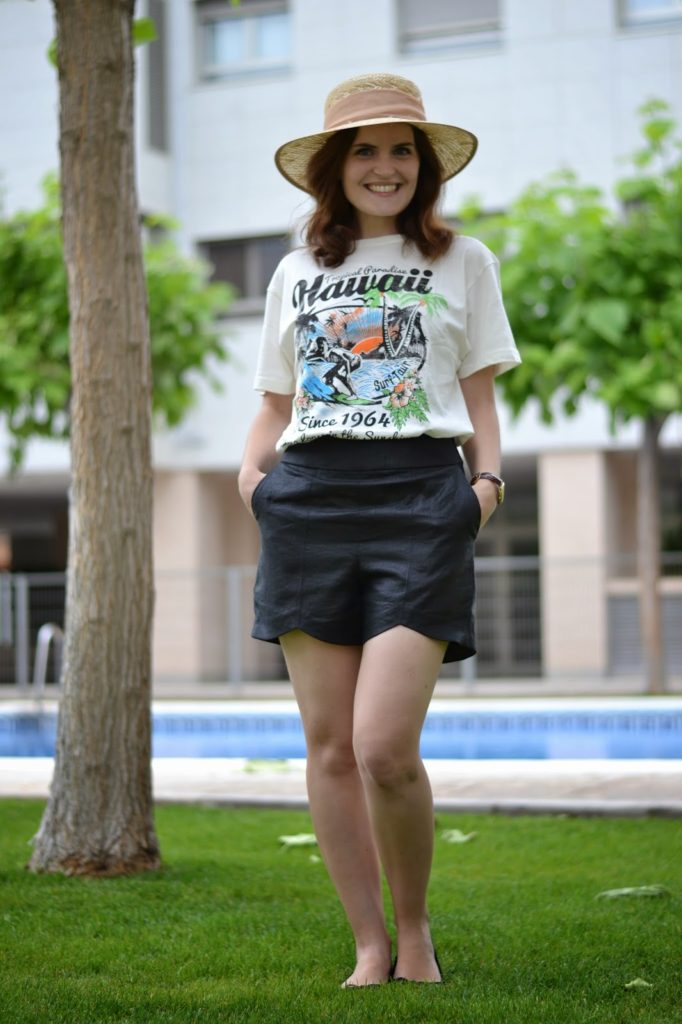
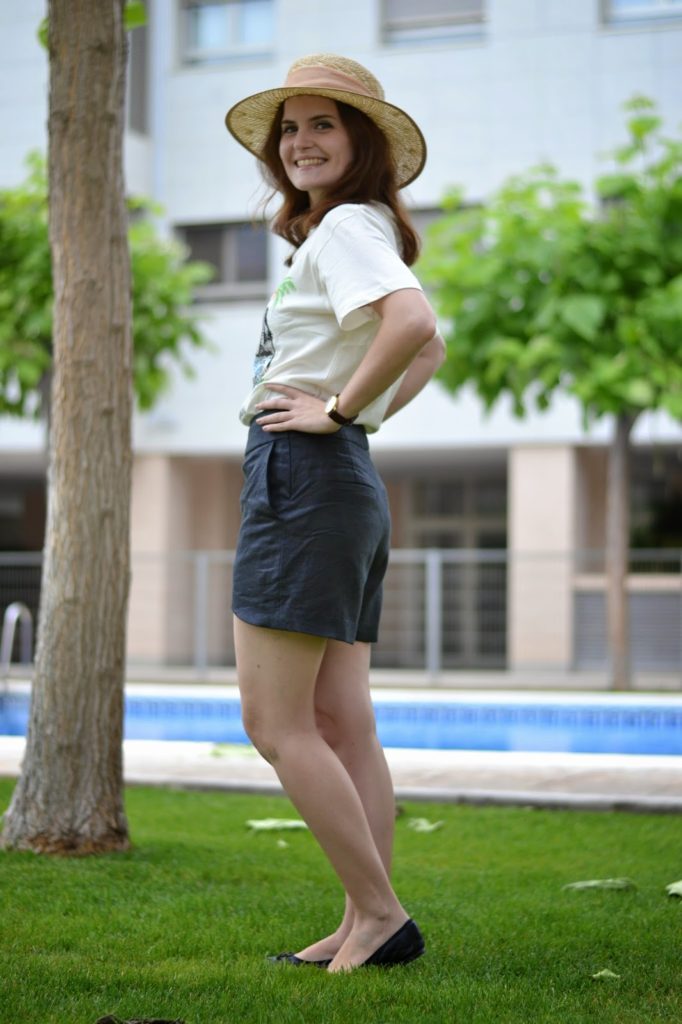
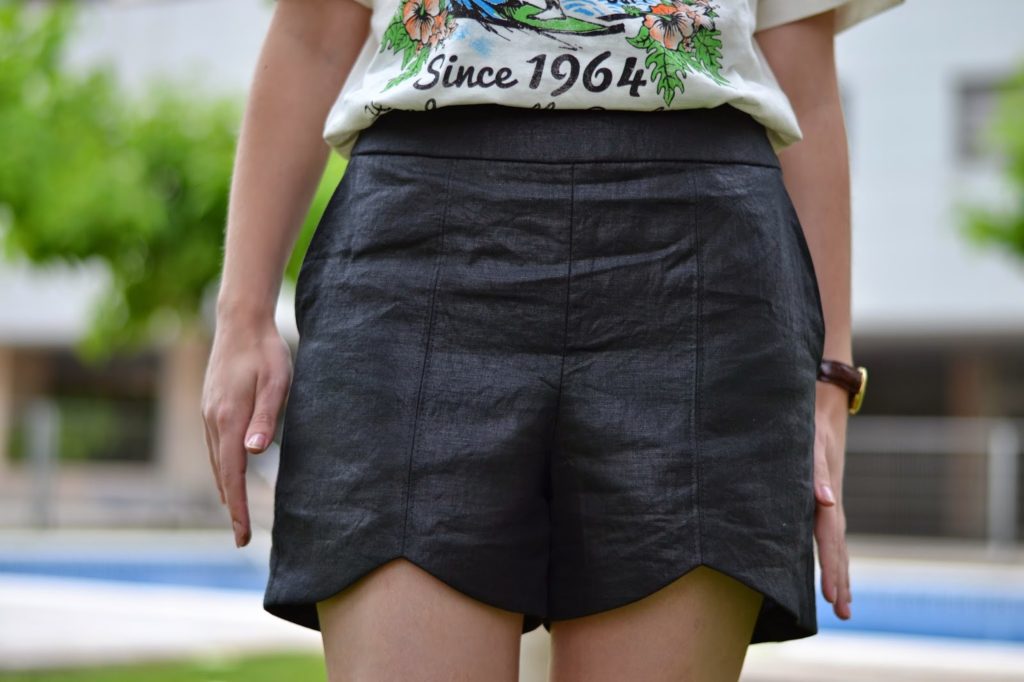 The sizing of the pattern is good but I found it a little big. According to the measurements, I cut a size XS (and didn’t make a muslin, silly me) but when I tried it on, it was large both at the hips and at the waist (it’s supposed to sit at the natural waist). I remember reading reviews saying the same. I stitched 1,5 cm seam allowances all over instead of the 1 cm included in the pattern. But I think I’ll just cut the XXS size next time as it’s still a little big (it’s the first time I’ve entered into such a small size haha). I would also make them a little bit shorter, but that’s a personal preference. But these are such easy changes that I can only say the best about this pattern (and it’s really my fault as I could have avoided that by making a muslin).
The sizing of the pattern is good but I found it a little big. According to the measurements, I cut a size XS (and didn’t make a muslin, silly me) but when I tried it on, it was large both at the hips and at the waist (it’s supposed to sit at the natural waist). I remember reading reviews saying the same. I stitched 1,5 cm seam allowances all over instead of the 1 cm included in the pattern. But I think I’ll just cut the XXS size next time as it’s still a little big (it’s the first time I’ve entered into such a small size haha). I would also make them a little bit shorter, but that’s a personal preference. But these are such easy changes that I can only say the best about this pattern (and it’s really my fault as I could have avoided that by making a muslin).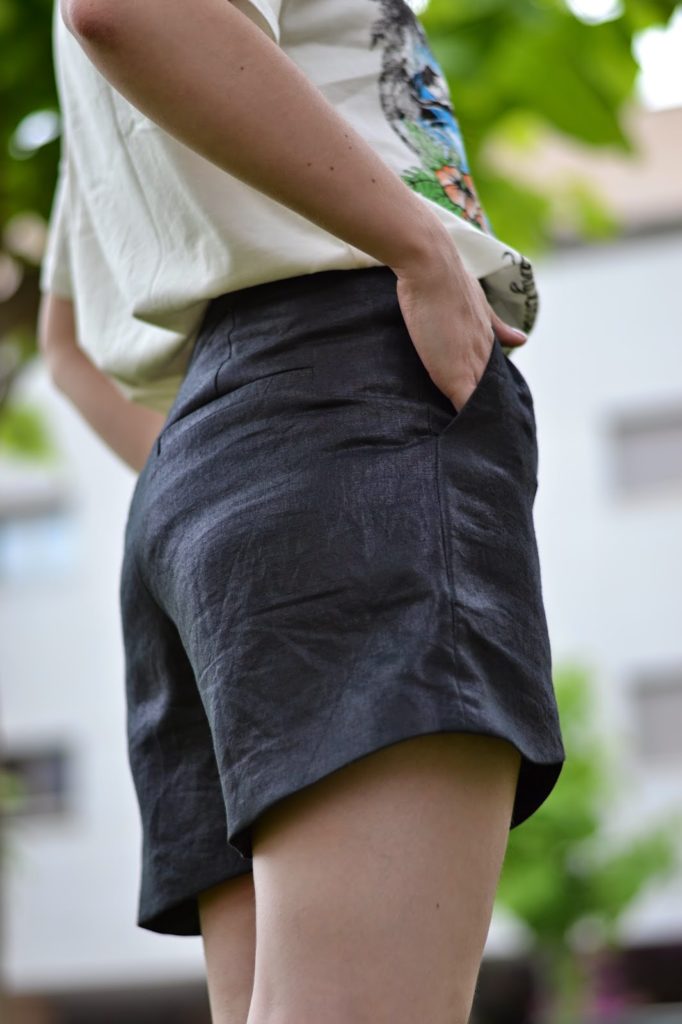 The instructions are clear (the welt pocket lining could be easier, if you have never made one, take your time and check their online
The instructions are clear (the welt pocket lining could be easier, if you have never made one, take your time and check their online 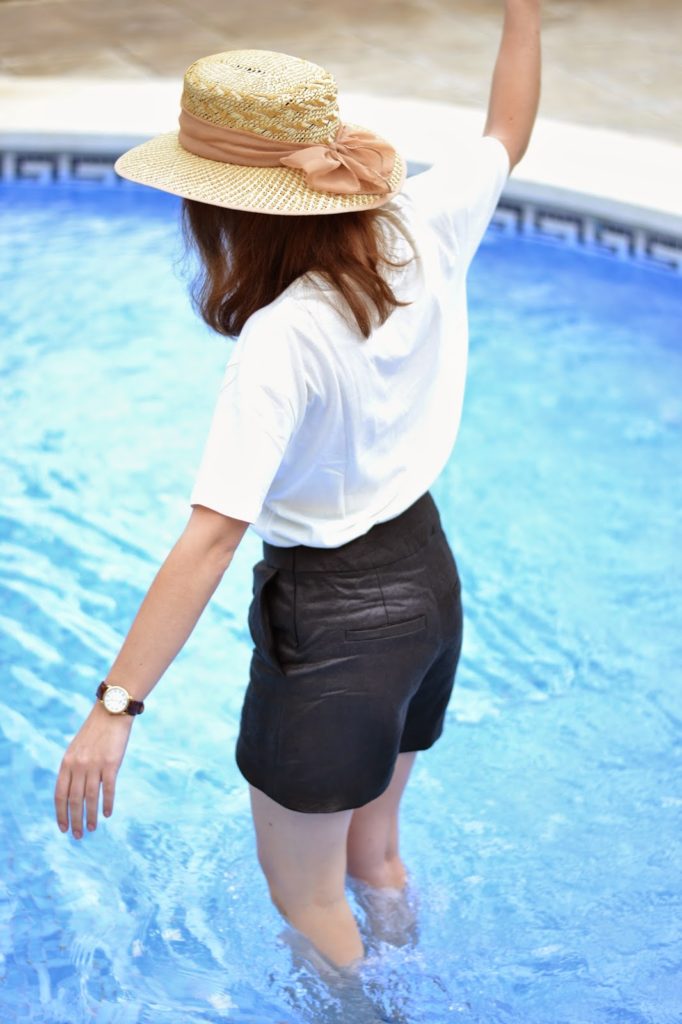
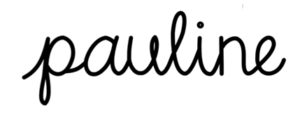

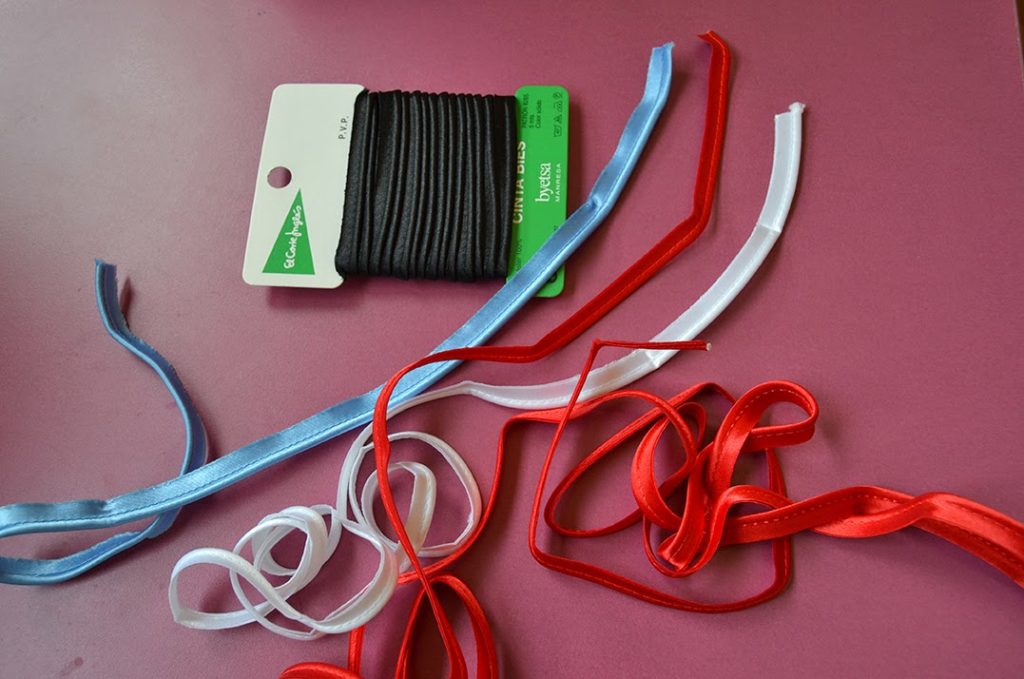
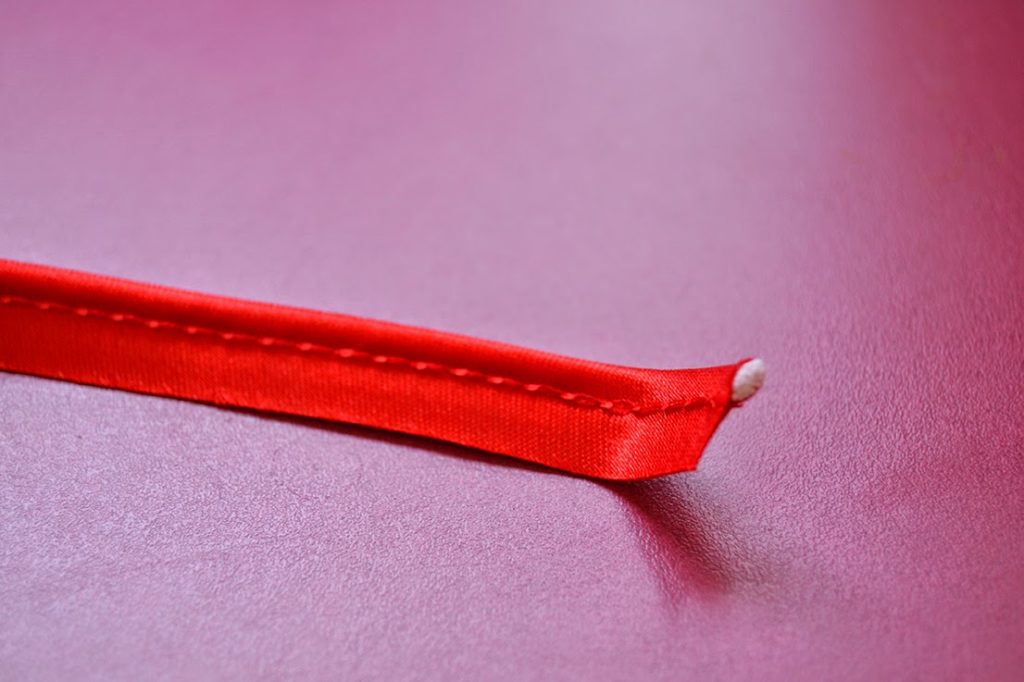
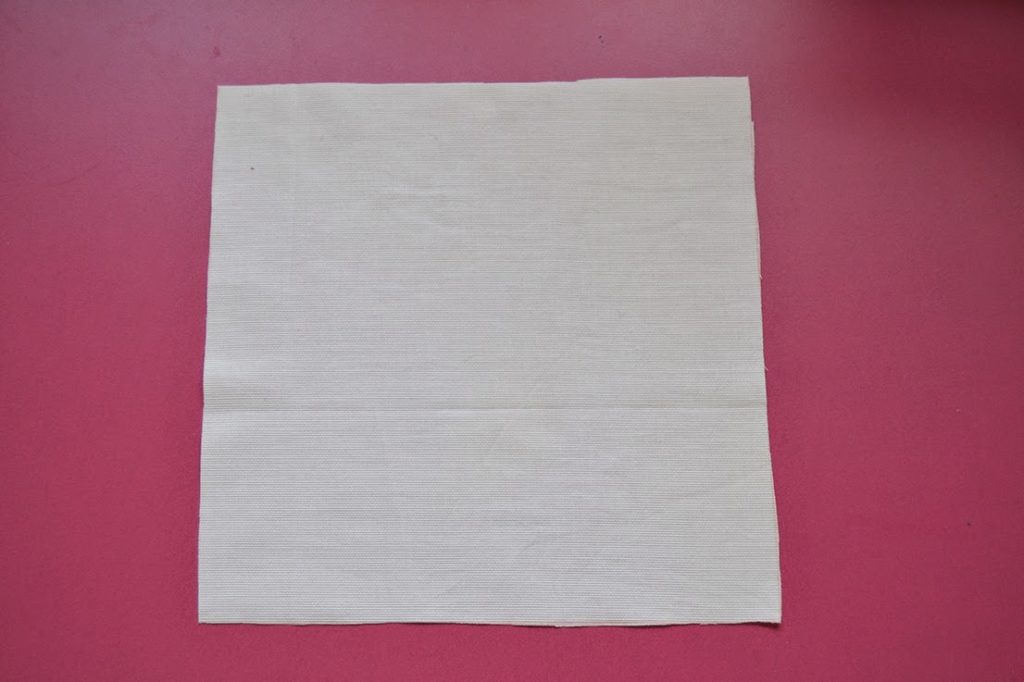 2. Cut a square piece of fabric. I made mine 25 cm x 25 cm (10″ x 10″) but you can make it as big or small as you want. With this size, I was able to make a 2,4 m strip of bias (2 1/4 yards).
2. Cut a square piece of fabric. I made mine 25 cm x 25 cm (10″ x 10″) but you can make it as big or small as you want. With this size, I was able to make a 2,4 m strip of bias (2 1/4 yards).

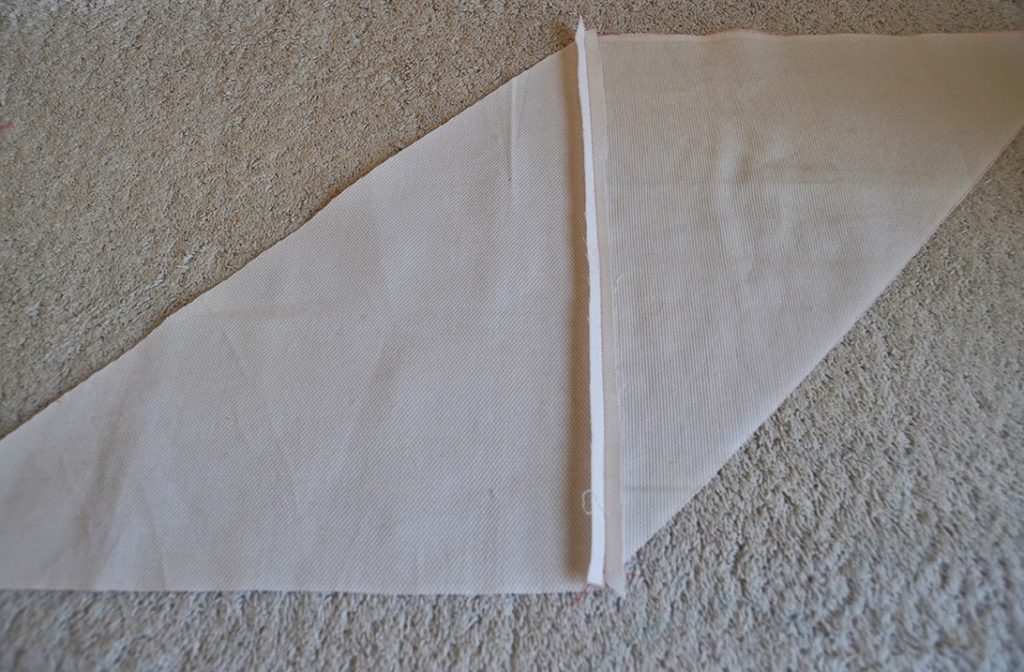
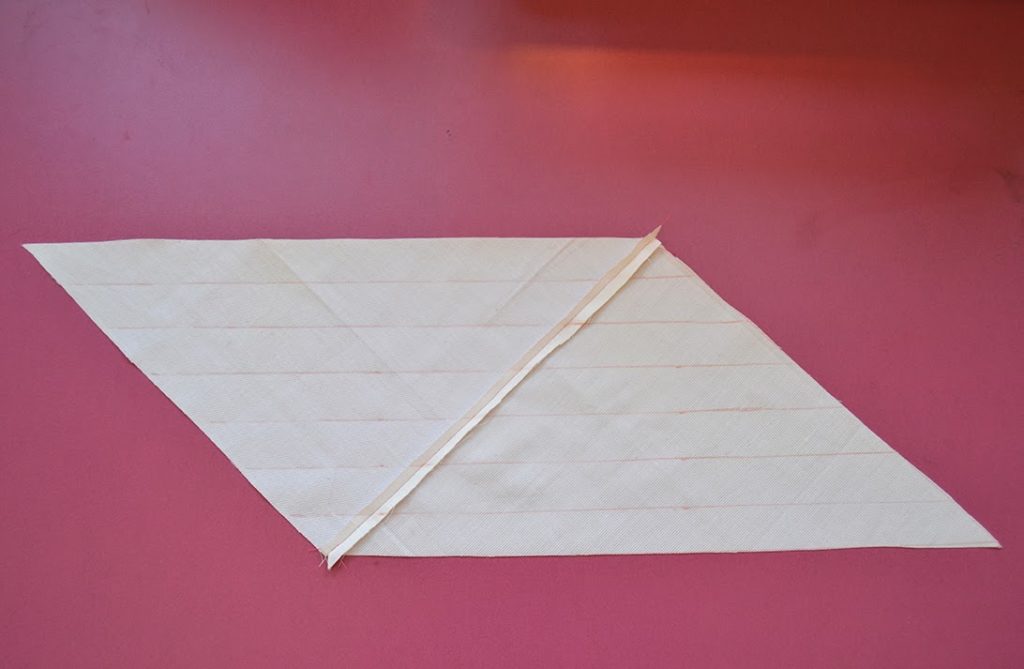 6. Draw parallel
6. Draw parallel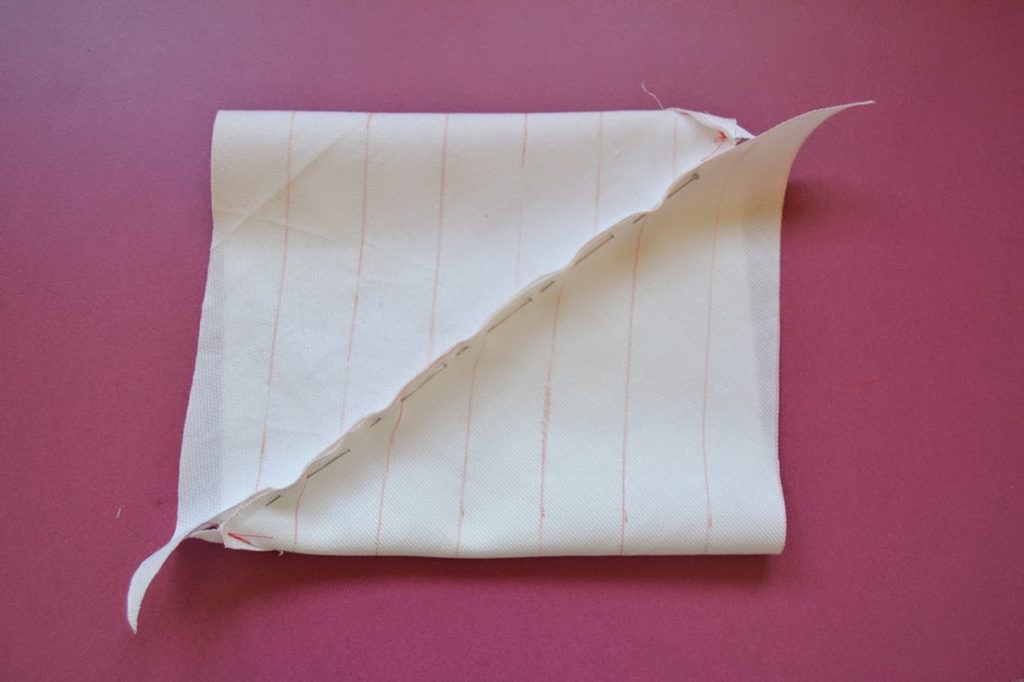
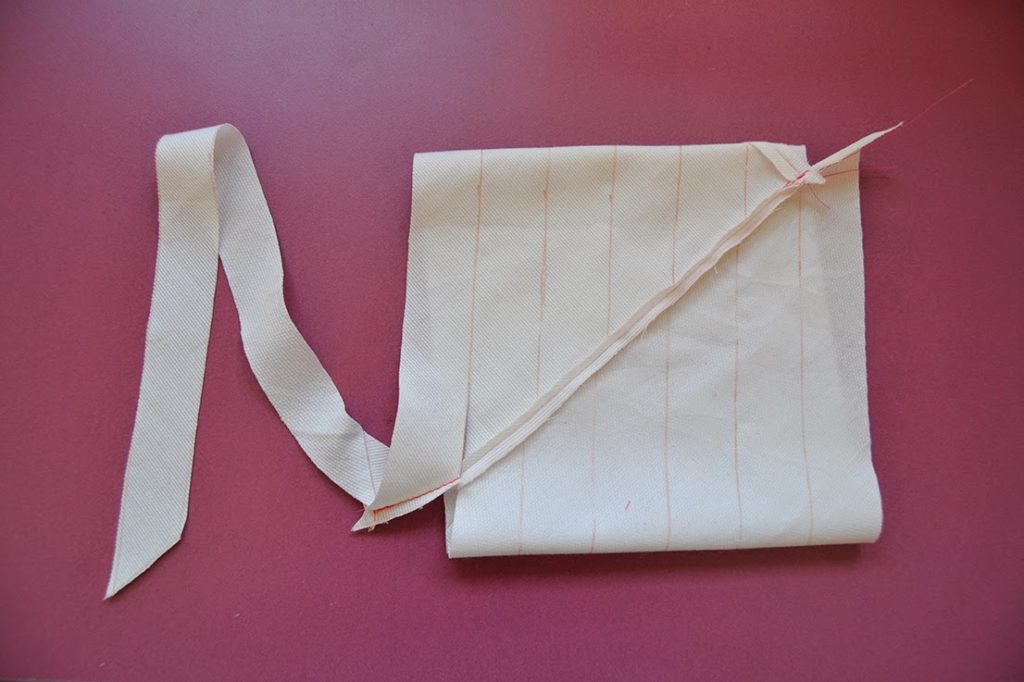 8. After the tricky part, the fun one! Now that you have a tube, start cutting the first offset row following the continuous line until the end.
8. After the tricky part, the fun one! Now that you have a tube, start cutting the first offset row following the continuous line until the end.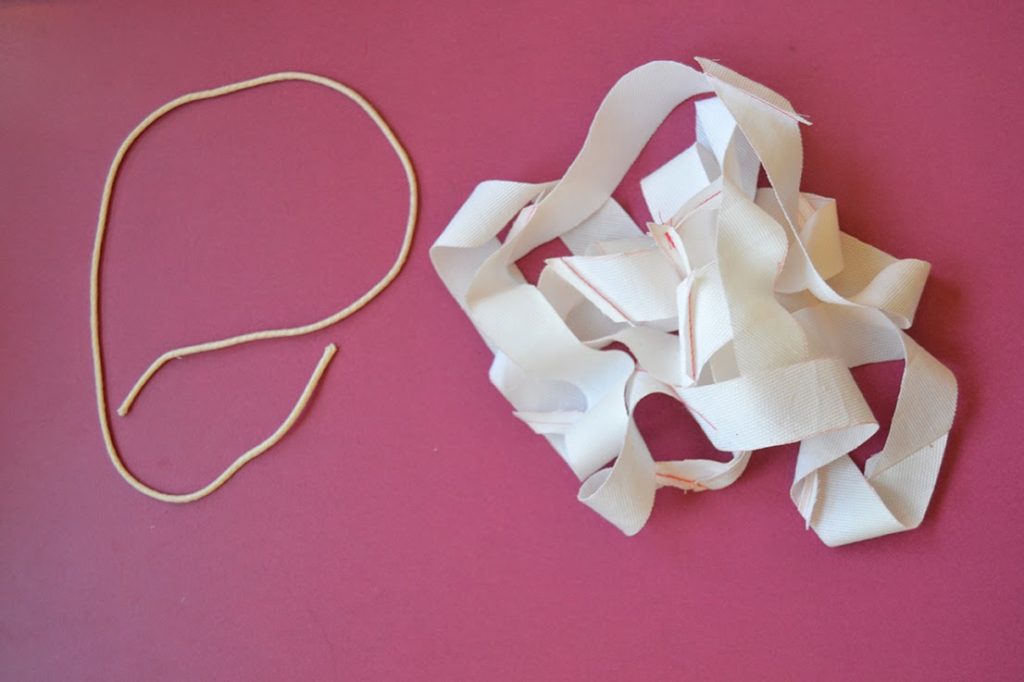 9. Now you have the strip of fabric cut on the bias and you need your cord.
9. Now you have the strip of fabric cut on the bias and you need your cord.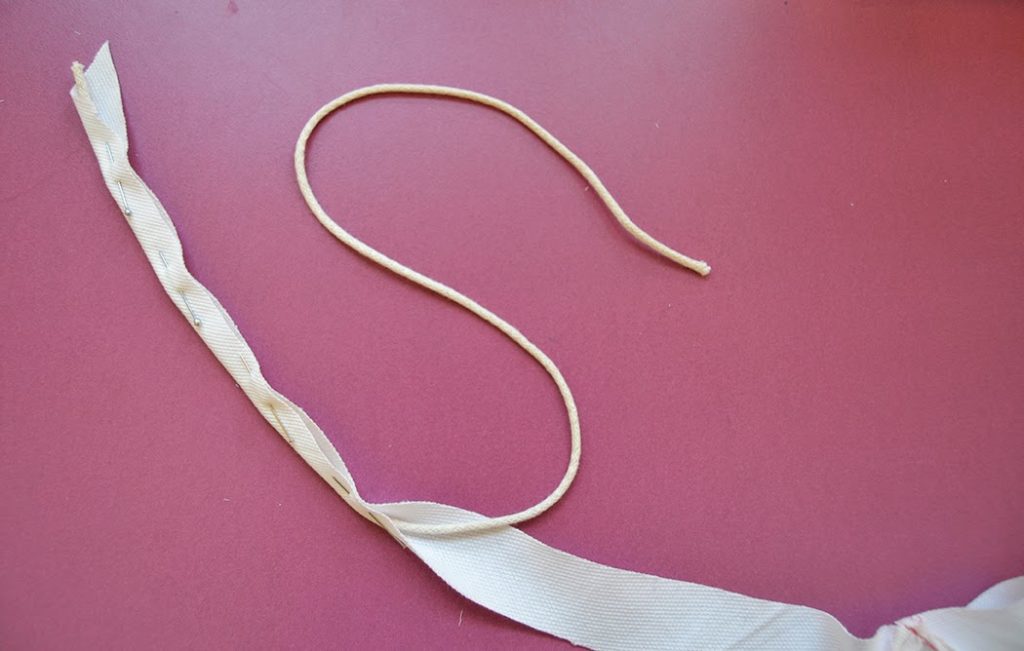 10. Place the cord on the wrong side on the bias, fold the bias in half to sandwich the cord and secure it in place with pins.
10. Place the cord on the wrong side on the bias, fold the bias in half to sandwich the cord and secure it in place with pins.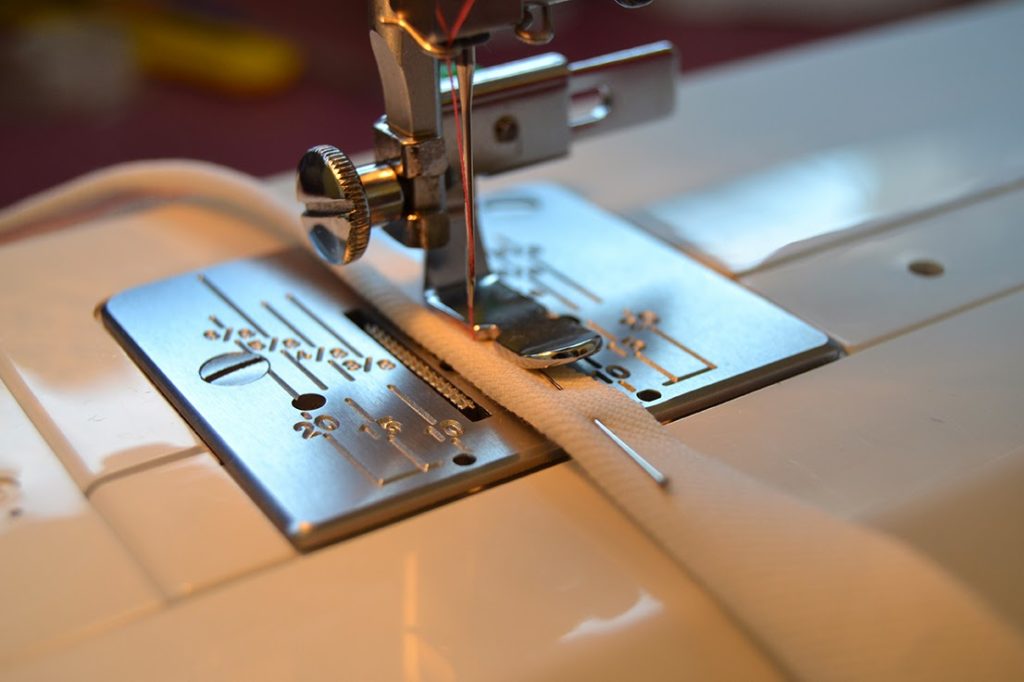 11. With a zipper foot, stitch as close as possible to the cord (possibly with a matching thread! I’m using a constrating one so you see it better).
11. With a zipper foot, stitch as close as possible to the cord (possibly with a matching thread! I’m using a constrating one so you see it better). 12. There you go! You made your own piping! Now use it in some great outfits!
12. There you go! You made your own piping! Now use it in some great outfits!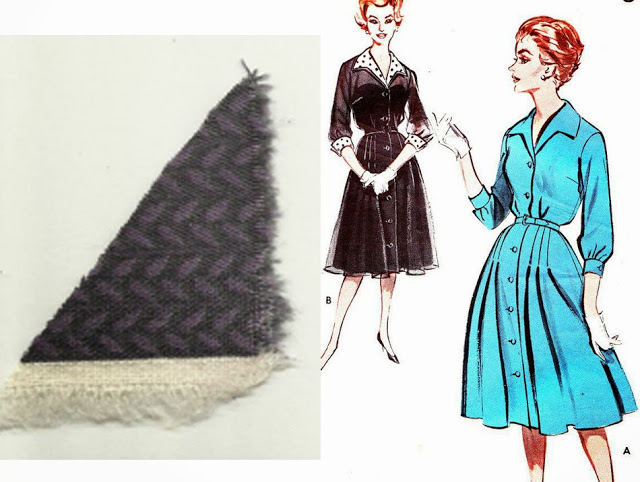
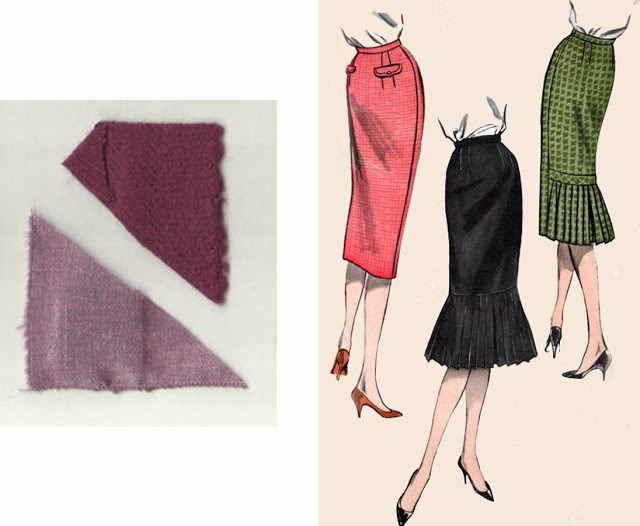 I have this beautiful burgundy wool that will be perfect for a jacket/skirt ensemble. I’m thinking of a short swing jacket and a pencil skirt with knife pleats at the back. And the light pink lining for a little bit of contrast.
I have this beautiful burgundy wool that will be perfect for a jacket/skirt ensemble. I’m thinking of a short swing jacket and a pencil skirt with knife pleats at the back. And the light pink lining for a little bit of contrast.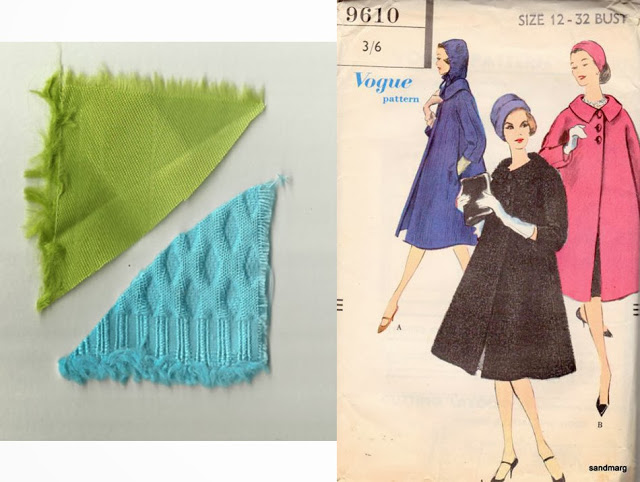 With the same pattern as the short swing jacket, I want to make a swing coat. I will just make it longer (or I hope it will work like that). I have a bright baby blue wool/cotton fabric with a diamond pattern in relief. With a bright green lining, it will be a very nice coat to brighten the winter.
With the same pattern as the short swing jacket, I want to make a swing coat. I will just make it longer (or I hope it will work like that). I have a bright baby blue wool/cotton fabric with a diamond pattern in relief. With a bright green lining, it will be a very nice coat to brighten the winter.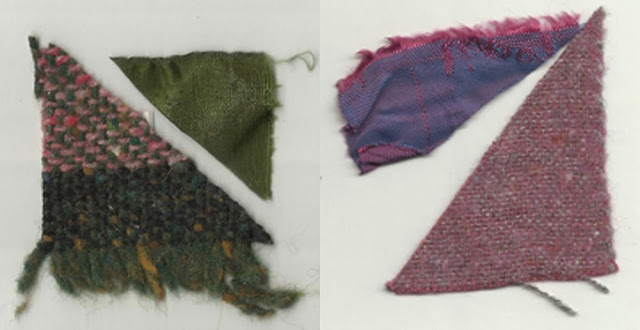 These two combinations are for skirts: A-line skirts with pleats. I need more skirts, I have lots of dresses but very few skirts. So I will add two for the winter: one in wool tweed in green, pink and brown with a bottle green lining and the other one in purple wool with blue/purple lining.
These two combinations are for skirts: A-line skirts with pleats. I need more skirts, I have lots of dresses but very few skirts. So I will add two for the winter: one in wool tweed in green, pink and brown with a bottle green lining and the other one in purple wool with blue/purple lining.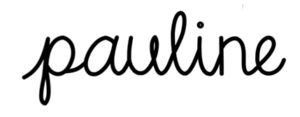
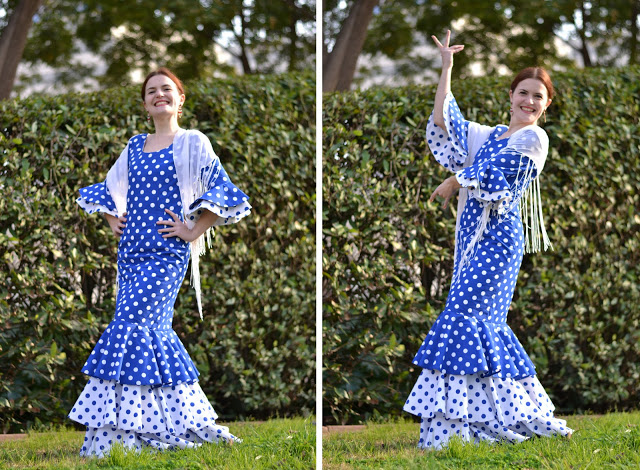
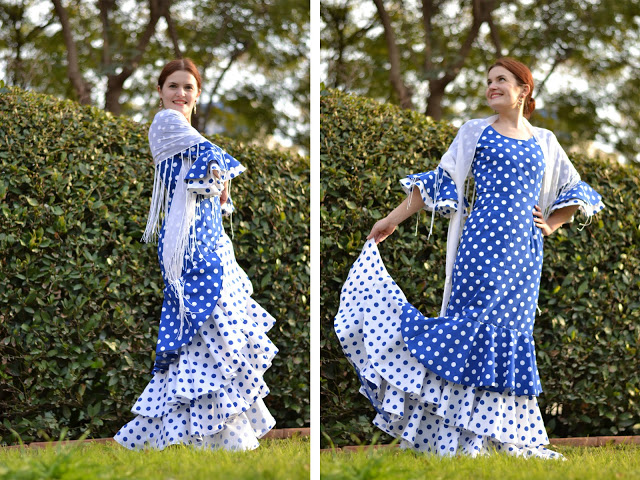
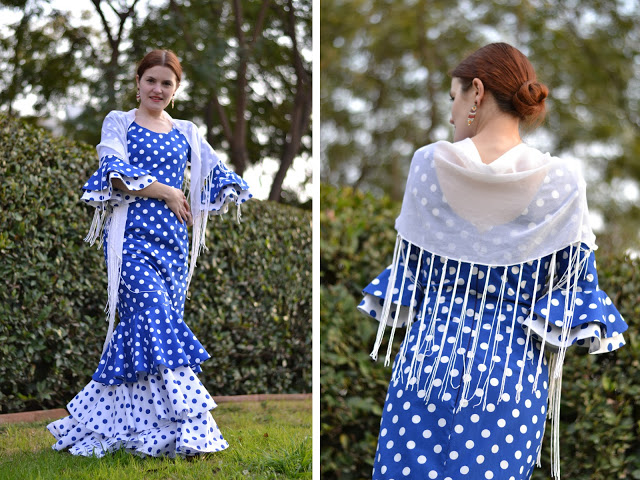
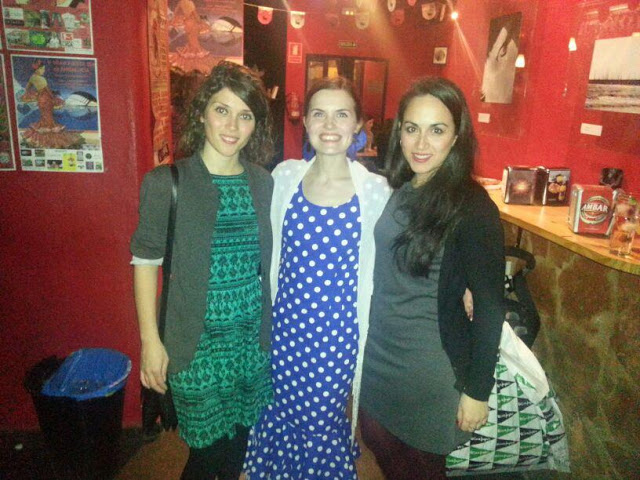
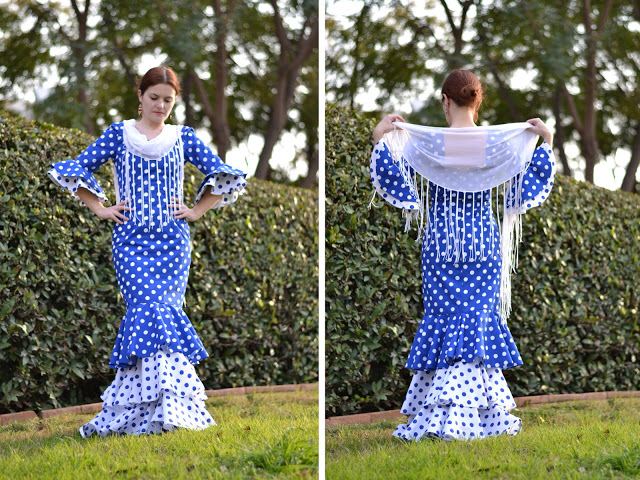
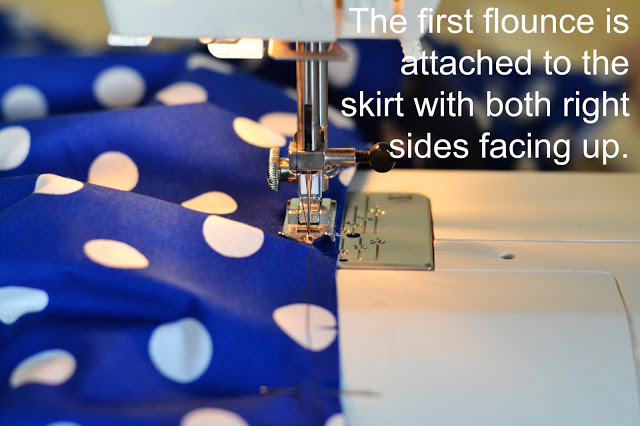
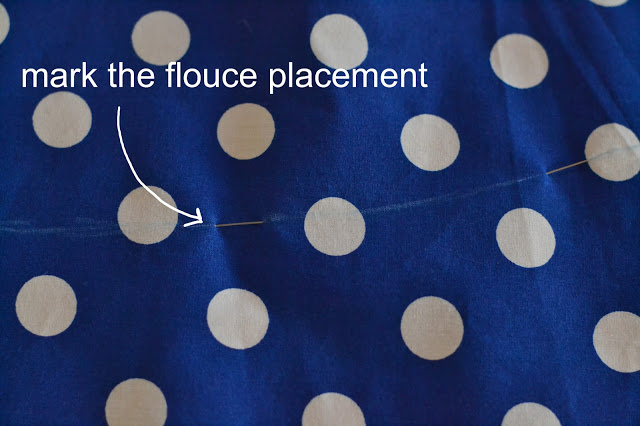 3-Here is a drawing (very bad!) I made to explain how to place the flounces on the skirt. You see that the first flounce is sewn right side up and the following ones wrong side up with the flounce facing upward (that way, the seam allowance is hidden nder the flounce when folded).
3-Here is a drawing (very bad!) I made to explain how to place the flounces on the skirt. You see that the first flounce is sewn right side up and the following ones wrong side up with the flounce facing upward (that way, the seam allowance is hidden nder the flounce when folded).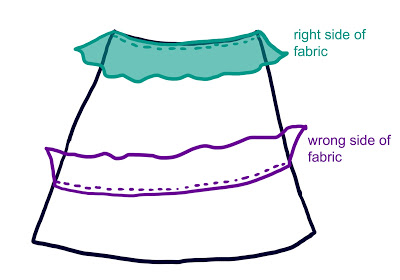
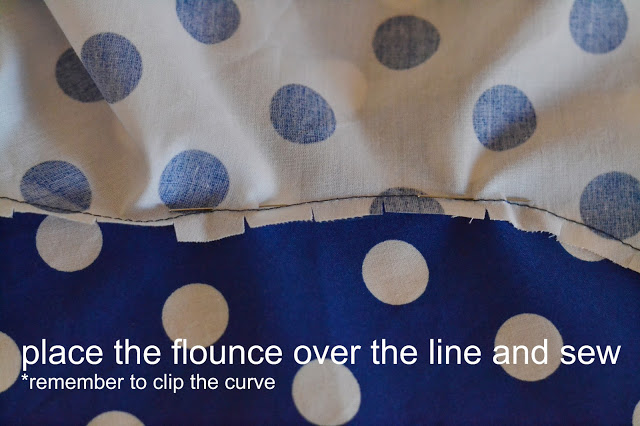 4-Repeat step 7 of the previous post to sew the back the dress (remember to sew each flounce separately).
4-Repeat step 7 of the previous post to sew the back the dress (remember to sew each flounce separately).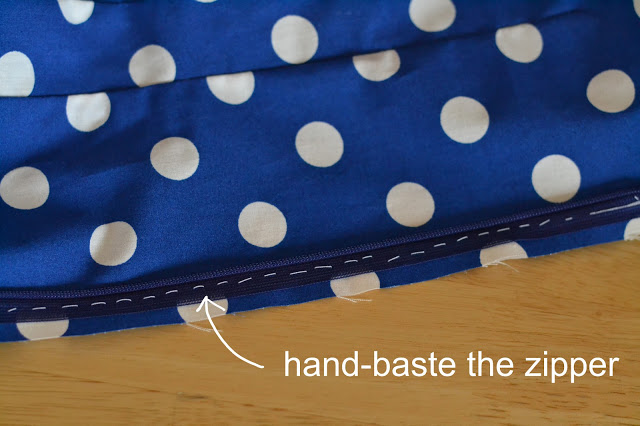 6-Hem the skirt and the flounces as you choose (decorative binding, turn in hem…).
6-Hem the skirt and the flounces as you choose (decorative binding, turn in hem…).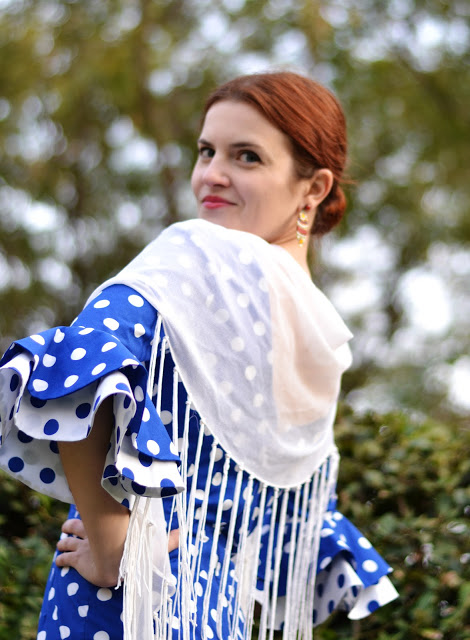
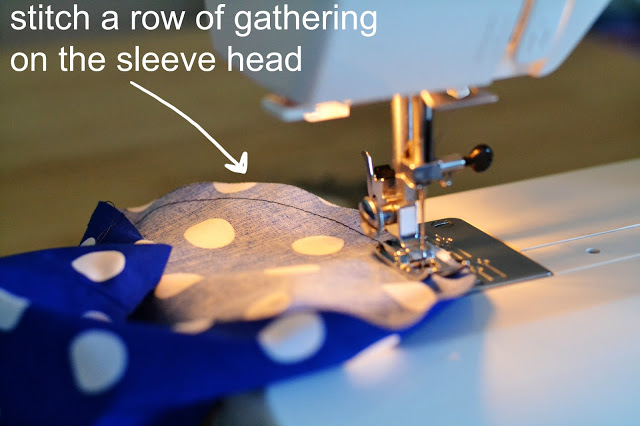
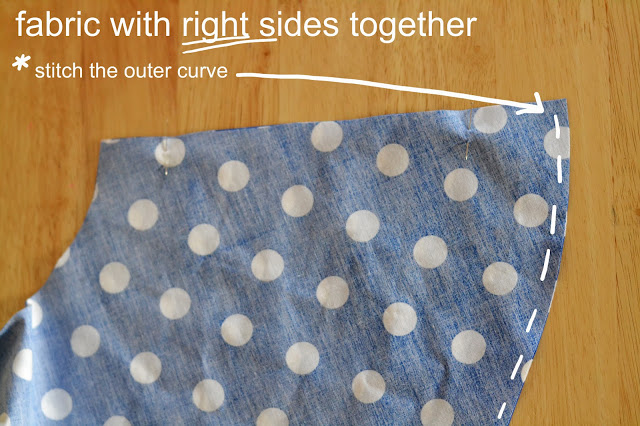
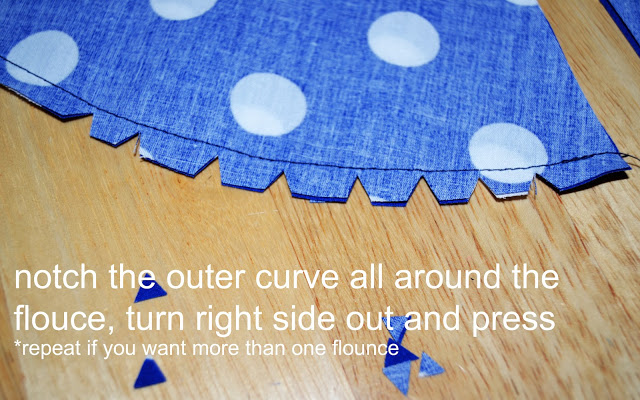 2-Remember to press flat (if the curve isn’t round, notch more closely but be careful not to cut into your row of stitches).
2-Remember to press flat (if the curve isn’t round, notch more closely but be careful not to cut into your row of stitches).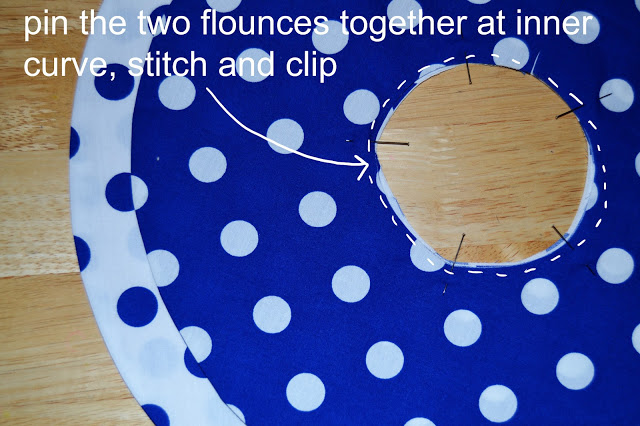 5-Take your sleeve piece.
5-Take your sleeve piece.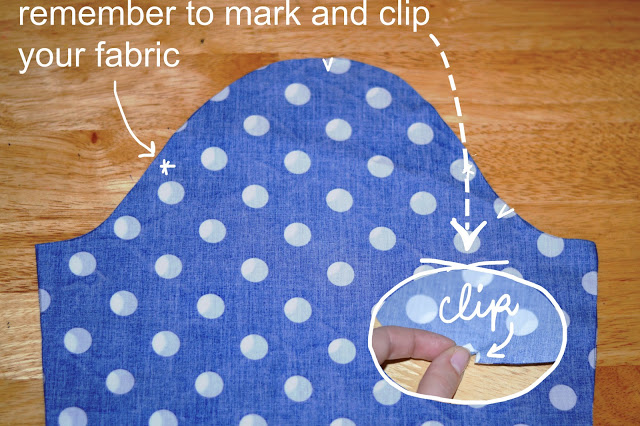
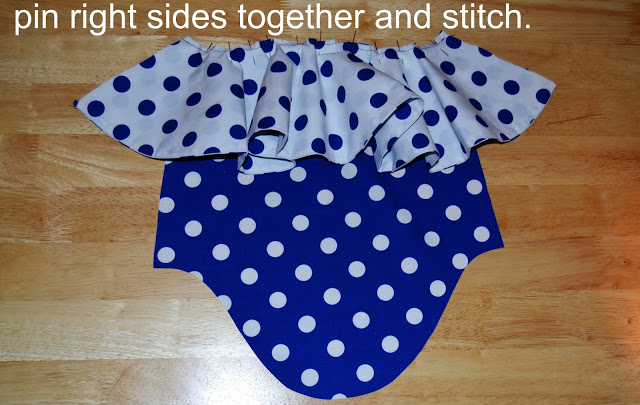
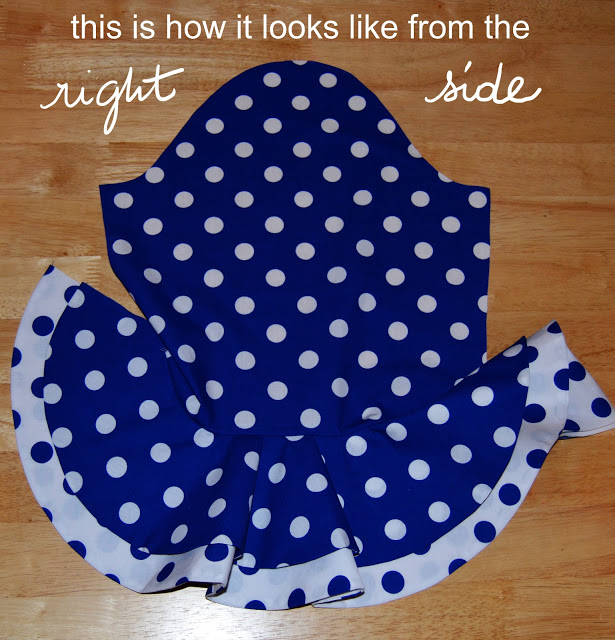 7-Stitch the flounces separately, press the seam allowances open, finish the edges as you prefer (zigzag, serger, bias binding…).
7-Stitch the flounces separately, press the seam allowances open, finish the edges as you prefer (zigzag, serger, bias binding…).